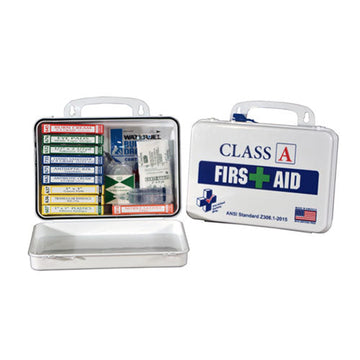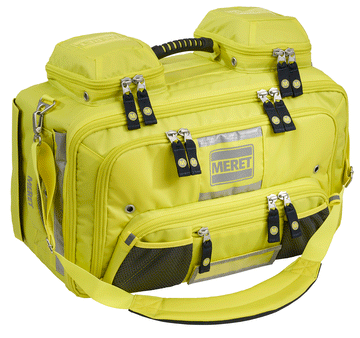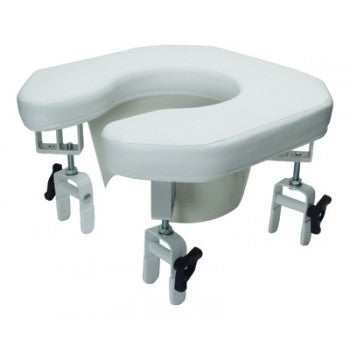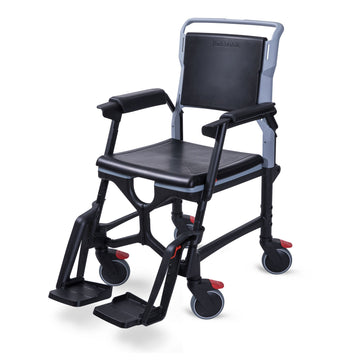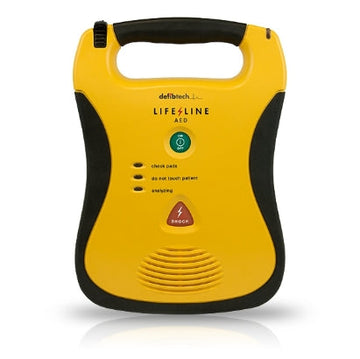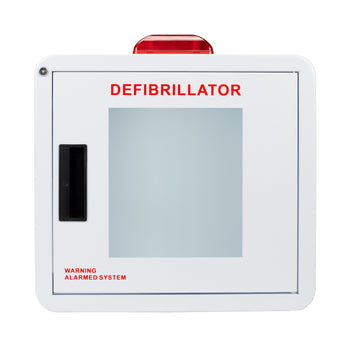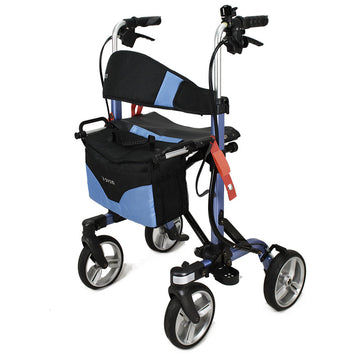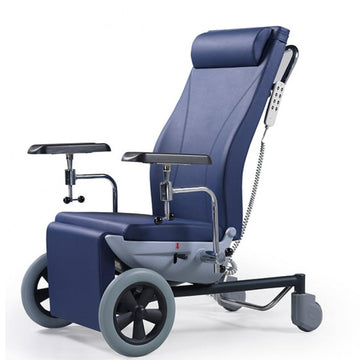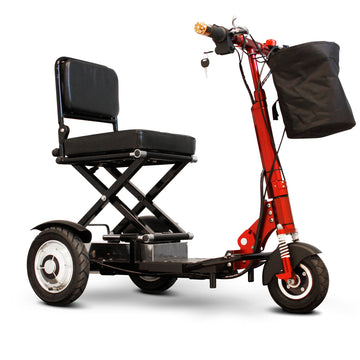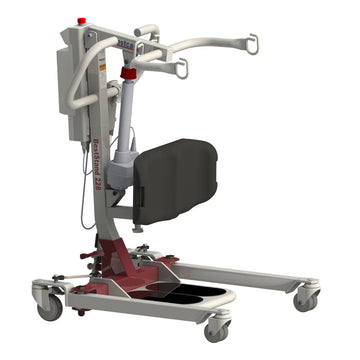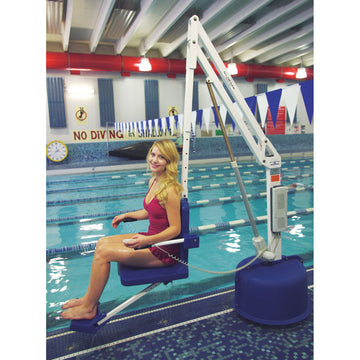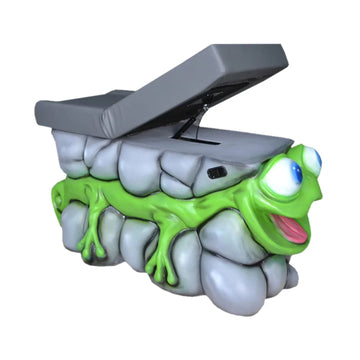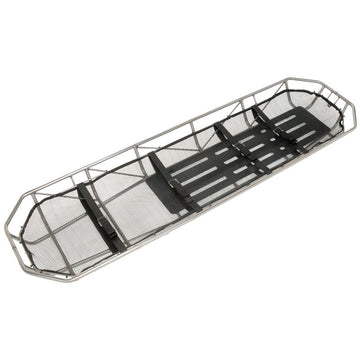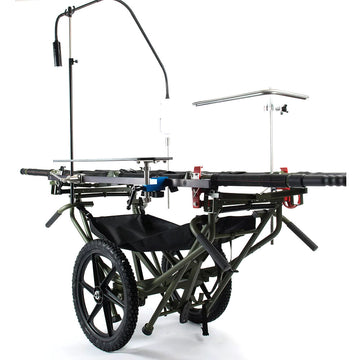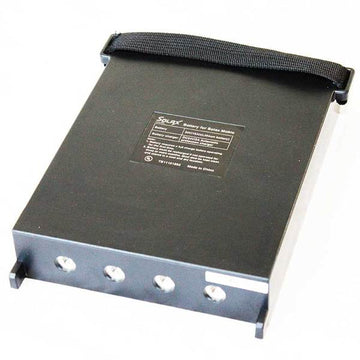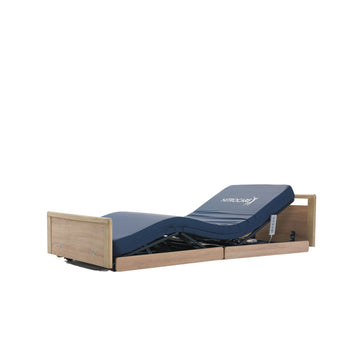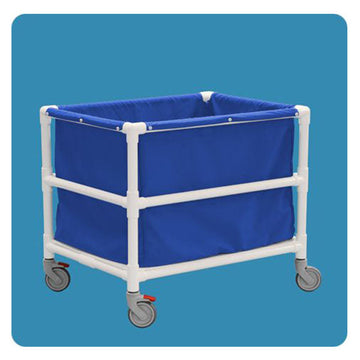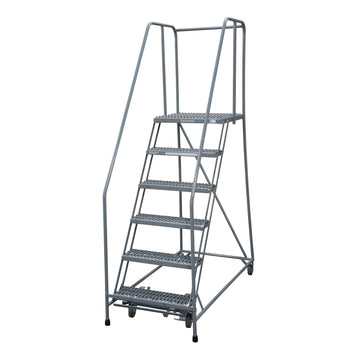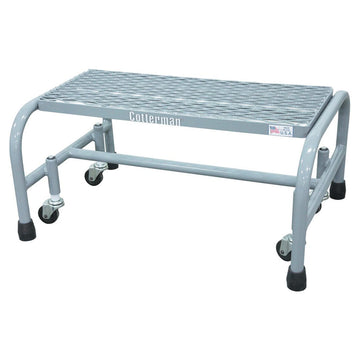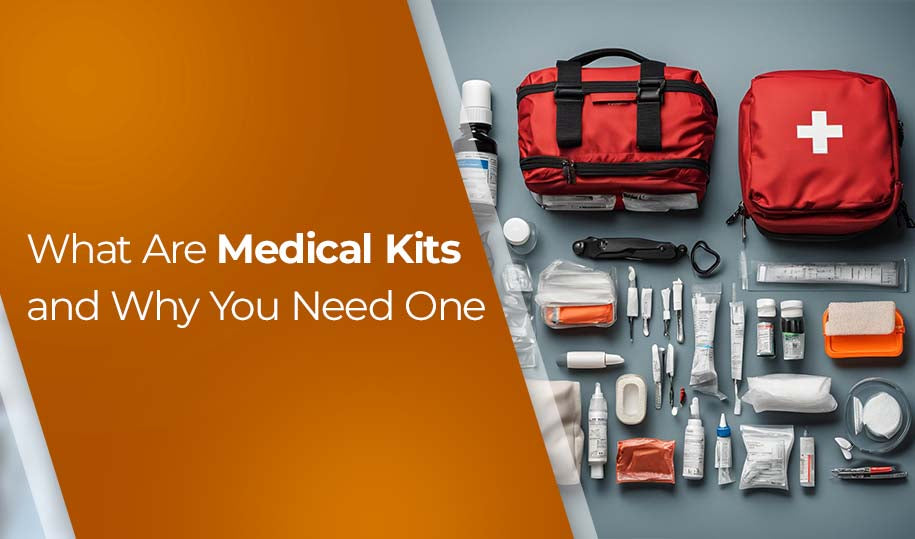Medical kits, often referred to as first aid kits, are essential tools designed to provide immediate care in case of injuries or medical emergencies. They come in various shapes and sizes and can be purchased or assembled at home. Having a well-prepared medical kit can mean the difference between a minor inconvenience and a serious health issue.
1. Understanding the Contents of a Medical Emergency Kit
A comprehensive medical emergency kit includes a variety of items that can treat common injuries and ailments. These items are selected based on their ability to address immediate healthcare needs effectively.
Detailed List of Essential Items
● Antiseptic wipes: Used for cleaning wounds and reducing the risk of infection.
● Adhesive bandages (assorted sizes): Ideal for covering small cuts, blisters, or abrasions.
● Antibiotic ointment packets: Helps prevent infections in minor cuts, scrapes, and burns.
● Absorbent compress dressings: Effective for larger wounds that may bleed heavily.
● Adhesive cloth tape: Useful for securing bandages or gauze pads in place.
● Aspirin packets: Can be used in case of chest pain suspected to be a heart attack.
● Emergency blanket: Provides warmth in case of shock or hypothermia.
● Breathing barriers with one-way valves: Essential for performing CPR safely.
● Instant cold compresses: Reduces swelling and numbs pain from sprains or bug bites.
● Non-latex gloves: Protects both the caregiver and the injured person from contamination.
● Hydrocortisone ointment packets: Relieves itching from insect bites or rashes.
● Gauze rolls and pads: For dressing larger wounds, they help control bleeding and protect against infection.
● Oral thermometers (non-mercury): Allows you to monitor body temperature accurately.
● Triangular bandages: Can be used as slings, tourniquets, or to secure splints.
● Tweezers: Handy for removing foreign objects like splinters or ticks.
Importance of Including Recommended Items
Including items recommended by reputable organizations such as the Red Cross ensures your medical kit meets standard safety guidelines. The Red Cross provides comprehensive lists tailored to different needs, ensuring that your kit is equipped to handle various emergencies effectively. Following these recommendations not only ensures that you have the right tools but also that you're prepared to use them correctly.
The importance of a well-stocked medical kit cannot be overstated. Whether it’s treating a minor cut at home or providing first response care during an emergency situation, having readily accessible first aid supplies can save lives and reduce the severity of injuries.
2. Key Essentials for Survival Medical Kits
Survival medical kits are an essential part of being prepared for emergencies. They are designed to handle a wider variety of situations compared to regular first aid kits. In addition to the basic first aid supplies, these kits also contain extra items that are critical for survival.
Key Items Specific to Survival Situations:
Personal Medications - It's vital to include a supply of any prescription medications required by family members. This ensures continuity of care during emergencies.
Sanitation Items - Items such as hand sanitizers, biodegradable soap, and waste disposal bags help maintain hygiene and prevent infections in challenging conditions.
Water Purification Tablets - Access to clean drinking water can be limited during emergencies; purification tablets provide a simple way to ensure water safety.
Multi-Purpose Tool - A tool that includes features like a knife, scissors, and pliers can be invaluable for various tasks.
Emergency Food Supplies - Non-perishable food items like energy bars and canned goods provide necessary sustenance when regular food sources are unavailable.
Shelter and Warmth - Emergency blankets, ponchos, and tents protect against harsh weather conditions.
Tailoring Contents Based on Family Needs:
Each family has unique needs that should be reflected in their survival medical kit. Consider factors such as:
1. Children - Include pediatric medications and child-specific items like diapers and formula.
2. Elderly Family Members - Ensure there are supplies specific to their health requirements, such as mobility aids or specific dietary needs.
3. Pets - Don't forget pet food, water, and any medications they may need.
By customizing your survival medical kit to fit your family's specific needs, you significantly increase your preparedness for any emergency scenario.
3. Creating Your Personal First-Aid Kit
A personal first-aid kit is an essential tool for handling minor injuries and emergencies at home or on the go. Understanding what are medical kits and their significance can help you better prepare for unexpected situations.
Step-by-Step Guide on Assembling a Personal First-Aid Kit
1. Choose a Suitable Container - Select a durable, waterproof container that is easy to carry and access. Options include a small backpack, a plastic box, or a specialized first aid bag.
2. Gather Basic Supplies:
- Adhesive Bandages - Various sizes for cuts and scrapes.
- Antiseptic Wipes - For cleaning wounds to prevent infection.
- Gauze Pads and Rolls - For dressing larger wounds.
- Adhesive Cloth Tape - To secure bandages or gauze.
- Antibiotic Ointment - To promote healing and reduce the risk of infection.
- Non-Latex Gloves - Protect yourself while treating others.
- Scissors and Tweezers - Essential tools for cutting tape or removing splinters.
- Instant Cold Packs - For reducing swelling.
- Oral Thermometer (non-mercury) - To monitor body tempe.rature
- Breathing Barrier with One-Way Valve - For performing CPR safely.
4. Personalize Your Kit:
- Add any personal medications you may need.
- Include a list of emergency contact numbers and medical information.
Recommended Items for Home vs. Travel First Aid Kits
Home First Aid Kit:
● Comprehensive supplies including all basic items listed above.
● Additional items like an emergency blanket, hydrocortisone ointment, and aspirin packets.
Travel First Aid Kit:
● Compact version of your home kit with essential items for portability.
● Consider adding motion sickness tablets and insect repellent.
Creating a personal first-aid kit tailored to your needs ensures you are prepared to manage minor injuries efficiently, whether at home or while traveling.
4. Maintenance and Checking First-Aid Kits
Maintaining and checking first-aid kits is essential to ensure they remain effective during emergencies. A medical kit, whether it's a basic first aid kit or a more comprehensive trauma kit, needs routine inspection to guarantee that all items are in good condition and ready for use.
Regular checks on your first-aid kit contents:
● Frequency - Check your first-aid kit at least twice a year.
● Inspection - Look through each item to ensure it's intact and ready for use.
Identifying expired or used items:
Expiration dates - Many items, such as antiseptic wipes, antibiotic ointments, and medications, have expiration dates. Replace these items when they expire to maintain the efficacy of your medical supplies.
Used items - Any used items should be immediately replaced after use. For example, if you've used adhesive bandages or gauze pads, replenish these supplies promptly.
Tips for maintaining your first-aid kit:
Inventory list - Keep an updated list of the contents of your medical emergency kit to make it easier to identify missing or needed items.
Storage conditions - Store your kit in a cool, dry place to prevent deterioration of the supplies.
Labeling - Clearly label your kits and include the date of the last check.
Regular maintenance ensures that your medical bag is always prepared for any situation, providing peace of mind and readiness in emergencies.
5. Specialized First Aid Kits for Different Situations

Different situations require specific medical kits to ensure effective response during emergencies. Car first aid kits are designed for vehicles and usually include:
● Reflective warning triangles for road safety
● Seatbelt cutters and window breakers for quick evacuations
● Burn dressings and eye wash solutions for accident-related injuries
On the other hand, travel first aid kits focus on being portable and versatile:
● Compact packaging to fit in luggage
● Motion sickness tablets and anti-diarrheal medication
● Water purification tablets
Both types have essential items like bandages, antiseptic wipes, and adhesive tape but are customized to meet specific needs.
6. Brand Recommendations for Quality Medical Kits
When considering the purchase of a medical kit, choosing a reputable brand is crucial to ensure high-quality and reliable supplies. Here are some leading brands known for their excellence in medical kits and supplies:
1. EMI
● Offers an extensive range of emergency medical supplies.
● Known for durable and comprehensive first aid kits designed for both professional responders and personal use.
2. Kemp USA
● Specializes in safety equipment and has a variety of first aid kits tailored for different environments, such as pools, sports fields, and workplaces.
● Products include unique features like waterproof cases and easy-to-carry designs.
3. MayDay
● Focuses on disaster preparedness with survival medical kits that include food, water, and essential first aid items.
● Kits are designed to support individuals for extended periods during emergencies.
4. Elite First Aid
● Provides military-grade first aid kits that are compact yet well-stocked.
● Popular among outdoor enthusiasts and those requiring rugged, field-ready solutions.
5. My Medic
● Offers customizable medical kits to fit specific needs, from everyday carry (EDC) kits to comprehensive trauma kits.
● Known for high-quality components and innovative packaging.
6. JJ Keller
● Supplies first aid kits that meet regulatory requirements for various industries.
● Kits are designed to be compliant with OSHA standards, making them ideal for workplace environments.
Exploring these brands will help you find a medical kit that suits your specific needs while ensuring you have reliable supplies on hand.
Conclusion: Be Prepared with the Right Medical Kit for Every Situation

Understanding the importance of having a medical kit at home and travel is crucial. By evaluating personal needs and specific circumstances, one can ensure readiness for any emergency. Whether it's knowing what is in a medical emergency kit or identifying what to put in a survival medical kit, preparedness is key.
Assess your situation, gather appropriate supplies, and maintain your kit regularly. Being equipped with the right tools can make a significant difference in handling unforeseen events effectively.


